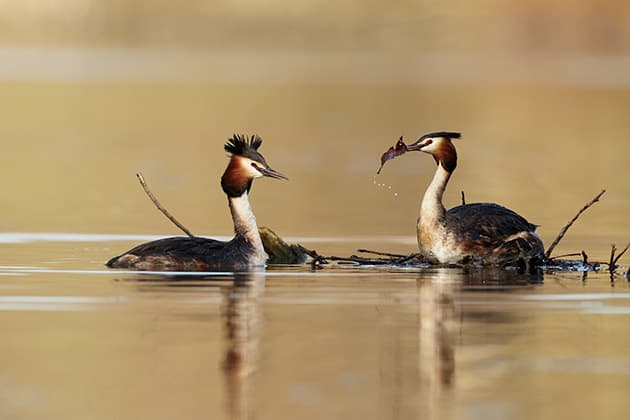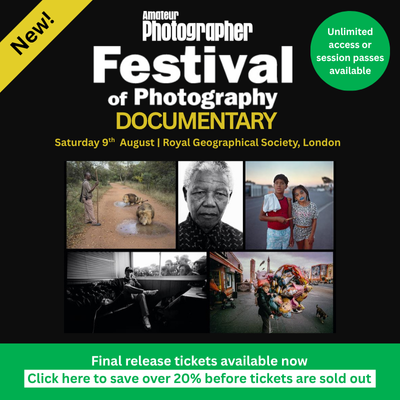
Credit: Mark Sisson
1. Spend time watching behaviour
This is key to wildlife photography as more time spent watching leads to a better understanding of behaviour and better anticipation – responding to what’s happening is often too late if the action is momentary in the first place. Only by watching a pair of great crested grebes for several spring mornings did I eventually spot where they decided to nest, resulting in a six-week vigil from then on as that year it was a photographable location. It hasn’t been for nearly 10 years since, so it was well-rewarded observational time.
2. Wherever you are, get low
Unless you are working from a considerable distance away and the angle is in your favour, all wildlife images are best taken at the same height as your subject: nothing is more effective than being at eye level, and conversely nothing looks less so than an image taken from a steep downwards angle. For birds on the water, a lower level makes the water more mirror-like in terms of reflections, and on land it creates the opportunity for some ‘mush’ at the bottom of the shot (out-of-focus foreground) which is creative, too.
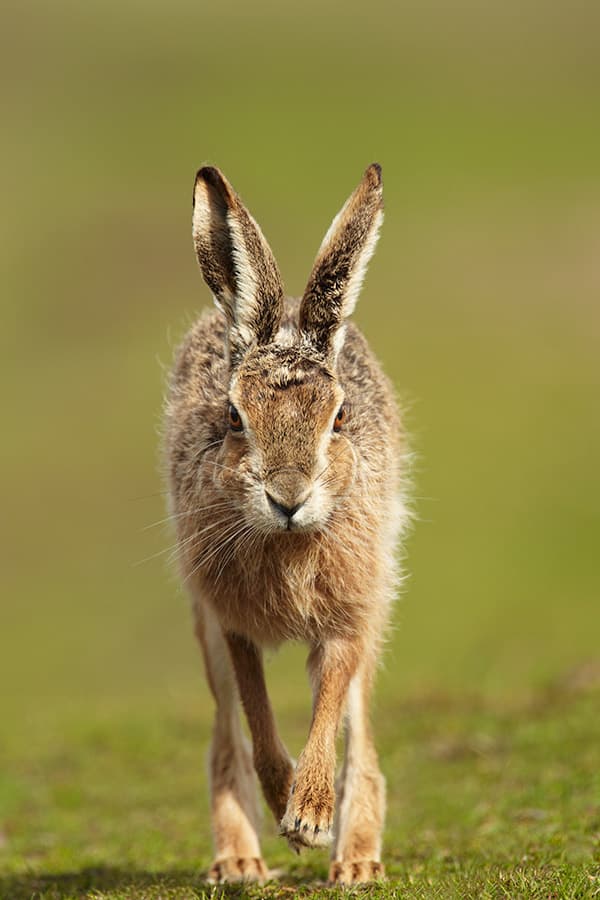
Credit: Mark Sisson
3. Get up early
Not only is this the best time of the day as far as light is concerned, but it is also the time when wildlife is at its most active and predictable. Brown hares for instance are at their busiest around dawn before looking to settle in their form for the majority of the day. When crops are short they are at their most visible, and time spent watching their movements will reveal favourite paths from fields they are feeding in, creating the opportunity to get in place and well hidden, waiting in anticipation.
4. Always think composition while shooting
There is nothing hard and fast here but it pays to keep the rule of thirds in mind when it comes to composition, especially making sure that your subject is looking into the resultant space. This means getting comfortable with moving your focal point around as you shoot. But once you start doing this routinely rather than relying on cropping for composition, you will start to see pictures so much better and you’ll also learn to anticipate how your subject is going to move and behave.
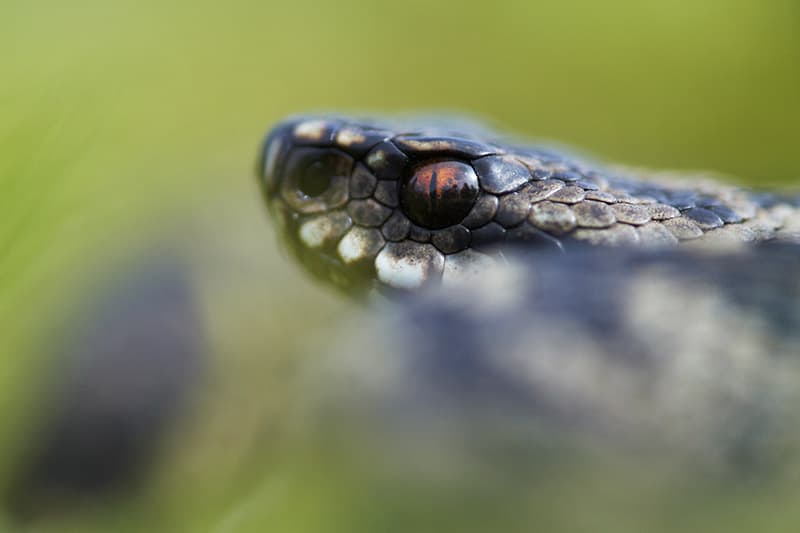
Credit: Mark Sisson
5. Get to know the law
As we move into breeding season for birds or reptiles like snakes that start to emerge from their winter quarters, then it’s important to understand just what regulations are in place to protect them. There is a hard and fast rule which should be applied at all times: the welfare of the subject is always more important than the photograph. The easiest place to check up on the rules is the RPS’s The Nature Photographers’ Code of Practice, which is available on the RPS website.
6. Give real consideration to your backgrounds
One of the benefits of long lenses is that they compress perspective, and if the background behind your subject is a reasonable distance away they will render it clean and smooth; as you position yourself to shoot, look behind your subject and see how it is working as the canvas. Slight positional movements can change the colour (green bushes or brown trees), totally changing the mood of the image. Don’t be afraid of texture as it can add context, but make sure it works around your subject and doesn’t cut through it in a distracting manner.
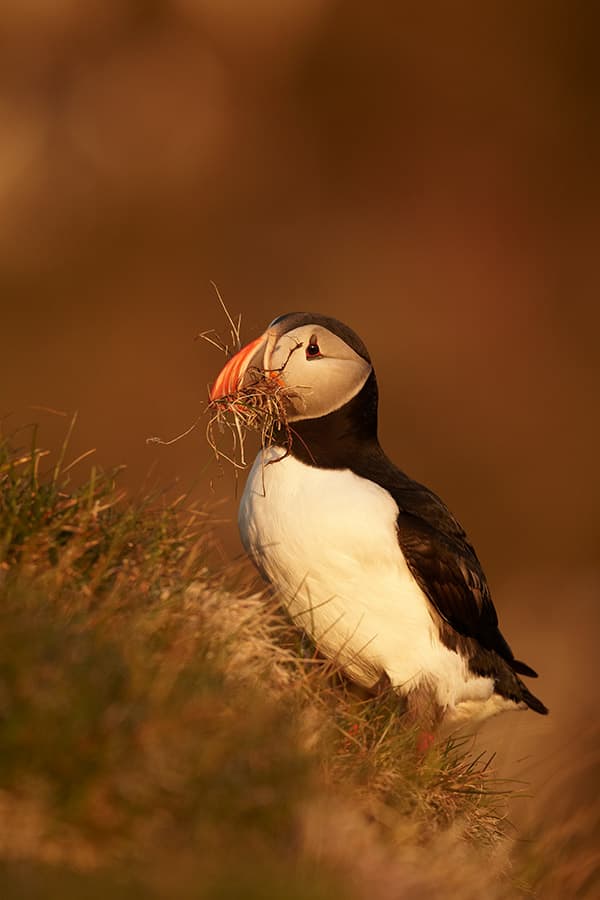
Credit: Mark Sisson
7. Be an early visitor to seabird colonies
We have fabulous seabird colonies in the UK, many of which are accessible with a bit of planning. While everyone always wants the classic shot of a puffin with sand eels that comes at the height of summer when the chicks have been born, there is potentially more variety of behavioural images (and a lot fewer visitors) at the beginning of the season as birds return to re-establish relationships, tidy up burrows and rebuild nests. It’s my personal favourite time to be in this environment.
Kit list
- Right-angle viewfinder This helps significantly when you are able to get your camera and long lens close to the ground and even more so when shooting low over the water. It takes a bit of getting used to, so practise at home first.
- Binoculars This might seem like an odd piece of kit for photography, but given the importance of observation at this time of the year, a good pair will allow you to do so from a distance – causing less disturbance to the wildlife.
- Rain cover April showers are rightly renowned, so a good cover for your camera and lens is essential. I use a LensCoat RainCoat Pro and it provides excellent protection. Hence, this is not something to skimp on, for obvious reasons.
Mark Sisson has been a full-time wildlife photographer for over 15 years. He has had several books published. He also co-owns/runs the largest UK wildlife photography holiday business, Natures Images.
Being a January baby I do love winter, but spring as a season offers so much in terms of wildlife photography, and in particular the opportunity to seek out and begin potential projects that might run for many weeks: the best way to work, capture different images and develop a serious portfolio. It is that time of the year when courtship and the breeding seasons begin and wildlife consequently settles into more predictable behaviour – and where it can be found, fieldcraft, observation, an understanding of the law, patience and hopefully great images are the order of the day (or should I say, season).

